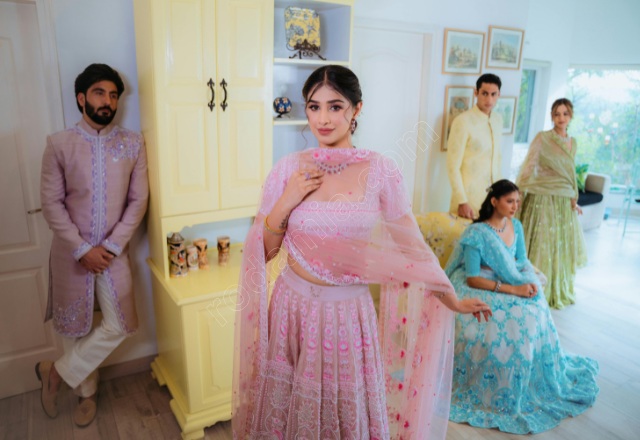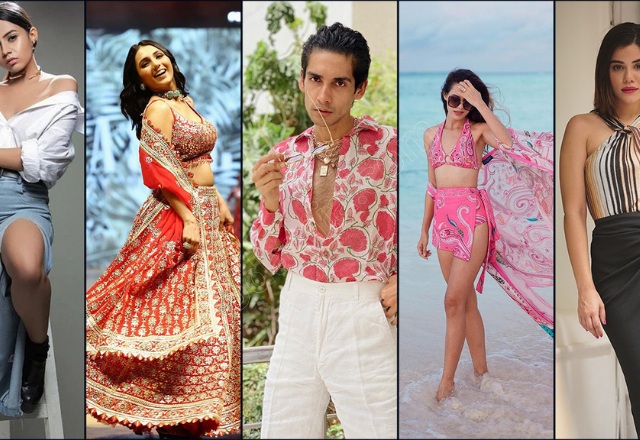Indian fashion is more than fabric — it’s a celebration of identity, culture, creativity, and craftsmanship. Fashion in India blends heritage, emotions, and modern lifestyle into every thread. Whether it’s the royal richness of Banarasi silk or the bold streetwear seen on social media today, India stands as one of the most diverse fashion hubs in the world.
In the last few years, Indian fashion has moved from being traditional and regional to global and experimental, capturing attention at international runways like Paris Fashion Week, Milan Fashion Week, and New York Fashion Week.
Designers, celebrities, content creators, and young consumers are now shaping what Indian fashion looks like.
1. The Legacy of Indian Fashion
A Journey From Ancient Roots to Modern Ramps
Fashion in India dates back thousands of years to the Indus Valley Civilization, where people used natural fibers like cotton and wool. Over the centuries, various rulers influenced Indian dressing styles:
| Era / Influence | Fashion Highlights |
|---|---|
| Indus Valley Civilization | Handwoven fabrics, draped cloth |
| Mauryan & Gupta Era | Fine muslin, colorful dyes |
| Mughal Period | Brocade, Zari work, Chikankari, silk |
| British Colonial Era | Introduction of blouse + petticoat with saree |
This fusion created a fashion identity unique to India:
Adaptable yet rooted in tradition.
2. Iconic Traditional Outfits of India
* Saree — The Eternal Grace
The saree represents timeless beauty. With more than 100 draping styles and countless regional variations, it reflects India’s diversity.
Famous types:
- Banarasi (Varanasi)
- Kanjeevaram (Tamil Nadu)
- Paithani (Maharashtra)
- Bandhani (Rajasthan + Gujarat)
* Lehenga Choli — The Celebration Favorite
A must-have for weddings, festivals, and bridal wear, often complemented with heavy embroidery.
* Salwar Kameez & Anarkali — Comfort Meets Elegance
Ideal for daily wear and festive occasions.
* Sherwani & Indo-Western for Men
Elegance meets royal charm, especially at weddings and engagement ceremonies.
* Kurta/Kurti — From Tradition to Fusion
Paired with jeans, jackets, sneakers — kurtas are the backbone of Indo-western fashion.
Indian clothing celebrates culture, craftsmanship, and comfort.
3. Fabrics That Define India’s Fashion Identity
India is the only country that produces such a wide range of regional textiles:
| State | Signature Fabric |
|---|---|
| Uttar Pradesh | Banarasi Silk |
| Rajasthan/Gujarat | Bandhani, Patola |
| West Bengal | Tant, Baluchari |
| Tamil Nadu | Kanjeevaram |
| Punjab | Phulkari |
| Kashmir | Pashmina |
Every weave tells a story.
Every fabric represents a heritage.
4. Indian Fashion on the Global Stage
Indian designers have pushed boundaries and earned global recognition.
Top designers who made India proud:
| Designer | Contribution |
|---|---|
| Sabyasachi | Revived luxury Indian bridal couture |
| Manish Malhotra | Bollywood fashion icon |
| Anita Dongre | Sustainable fashion advocate |
| Rahul Mishra | First Indian to showcase at Paris Haute Couture Week |
Hollywood and global stars wear Indian outfits:
- Beyoncé in Abu Jani & Sandeep Khosla
- Katy Perry in Manish Malhotra
- Indian designers, Wedding fashion,
India is no longer “following” global fashion —
India is influencing it.

5. Rise of Modern & Fusion Fashion
Youth and Gen-Z are redefining fashion by merging western and Indian silhouettes.
Popular trends:
- Saree with sneakers
- Crop top with lehenga
- Jacket over kurta
- Palazzo pants with embroidered tops
Fusion wear allows people to:
* be stylish
* stay comfortable
* express individuality
* Indian streetwear
Popular brands pushing modern Indian fashion:
- Snitch (Menswear streetstyle)
- FabIndia
- Biba
- W for Women
- Manyavar
- Nykaa Fashion / Ajio / Myntra
6. Streetwear Revolution: Gen-Z Takes Over
Indian fashion is experiencing a streetwear boom influenced by hip-hop culture, Instagram trends, and sneaker obsession.
Top streetwear outfits:
- Oversized T-shirts
- Cargo pants
- Co-ord sets
- Denim overshirts
- Sneakers with ethnic wear (yes, it’s trending!)
Popular streetwear brands in India:
- Snitch
- The Souled Store
- Hypebeast
- Urban Monkey
Streetwear is now a culture, especially with influencers and YouTubers promoting it.
7. How Social Media Changed Fashion in India
Fashion inspiration no longer comes from magazines — it comes from:
- Instagram Reels
- Pinterest boards
- YouTube
- Fashion influencers
Creators like Komal Pandey, Diipa Khosla, Karron Dhingra (The Formal Edit) and Ranveer Allahbadia (BeerBiceps) impact trends more than TV advertisements.
Online shopping platforms including Myntra, Ajio, Nykaa Fashion, and Amazon Fashion have democratized style. Anyone can follow fashion regardless of geography or budget.
AI tools suggest outfits based on:
- Skin tone
- Body type
- Personal style
Fashion is now in your pocket.
8. The Grand Indian Wedding Fashion
Indian weddings are not just ceremonies — they are fashion festivals.
Current trends in wedding wear:
- Pastel lehengas
- Personalized bridal embroidery (bride and groom name dates stitched inside)
- Groom sherwanis with intricate handwork
- Velvet + organza fabrics
Thanks to Bollywood movies like Rocky Aur Rani, Jab We Met, Veere Di Wedding, Indian youth see fashion as storytelling.
Bridal wear has become less about tradition and more about self-expression.
9. Sustainable Fashion: A Conscious Movement
Consumers today want style with responsibility.
What’s trending:
- Handloom fashion
- Vegan leather
- Eco-friendly dyes
- Upcycled clothing
Brands leading the sustainable wave:
- FabIndia
- Raw Mango
- Okhai
- Suta
Supporting sustainable fashion means:
* Supporting artisans
* Respecting heritage
* Saving the environment
10. Future of Indian Fashion (2025 & Beyond)
The future looks bold and innovative.
What trends will dominate:
* Ethical & eco-friendly clothing
* Digital trial rooms (AI virtual fitting)
* More streetwear & fusion wear
* Indian brands exploring international markets
* Modern fusion wear, ethnic wear trends
India is moving from “traditional clothing makers” to “fashion innovators”.
Conclusion
Indian fashion is a vibrant mix of:
- Culture
- Modernity
- Creativity
- Global influence
From the royalty of sarees to the cool streetwear of Snitch, India’s fashion journey reflects confidence and diversity.



